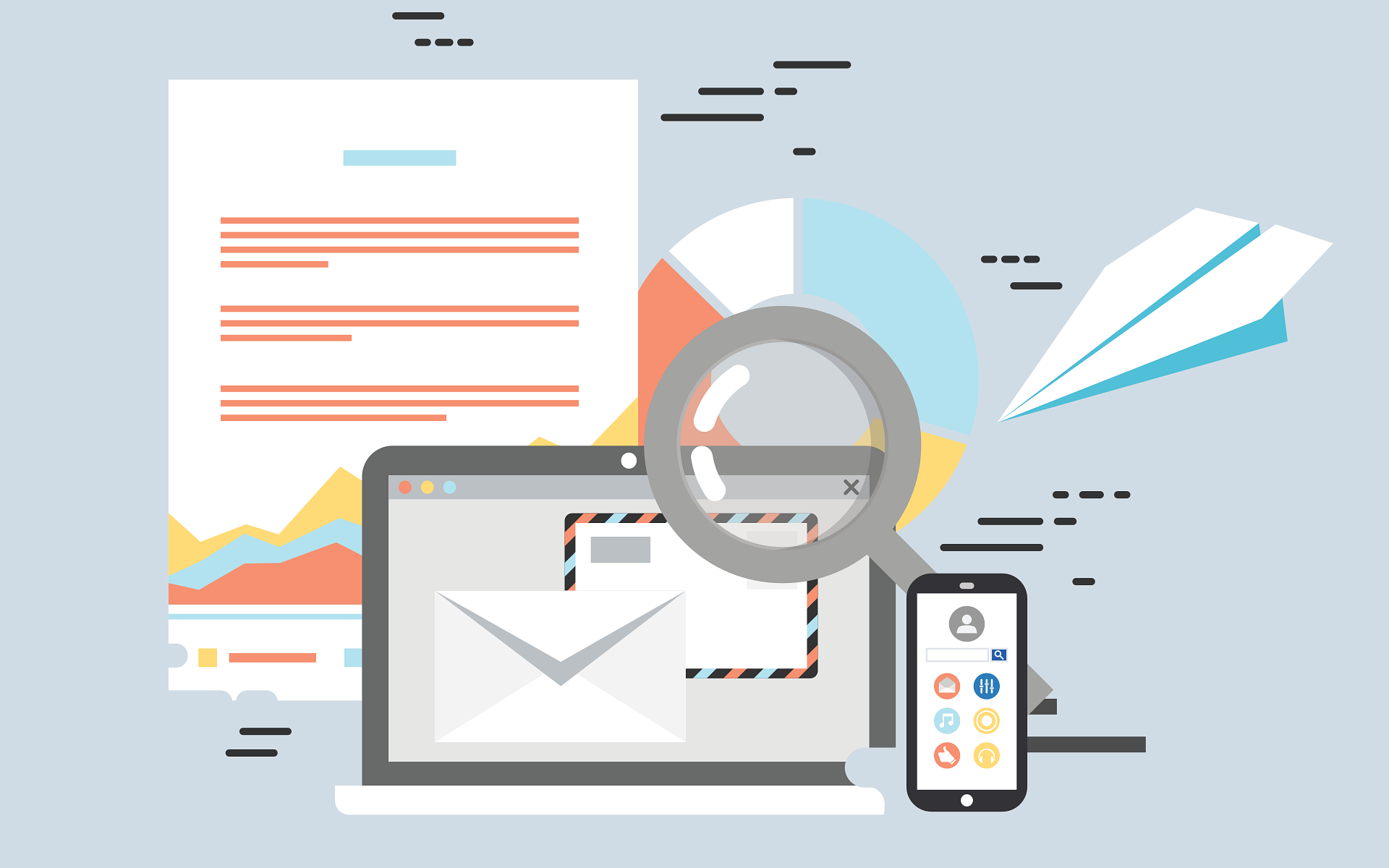
Email marketing remains highly effective and cost-efficient for businesses to engage their target audience, foster brand loyalty, and boost conversions. However, to run successful email campaigns in today’s competitive digital environment, companies must build (or review) their email marketing strategy. Such a strategy will dictate the why, when, and hows of all email campaigns. This article will discuss seven key areas to consider when developing a successful email marketing strategy.
Set Clear Objectives and Scenarios
The first thing you need to understand is why you want to use email marketing and when you want to use it. What are the top 5 or 10 goals you want to achieve through email campaigns? Is it to thank newly signed-up clients and give them 5% discounts on their next purchase? Is it to drive traffic to your website for a new product or an eBook? Will it be for cold outreach?
Write down every use case. Every scenario will have a different audience, campaign frequency, message content, and tone. For example, the email sent to a newly signed-up customer won’t have the same content, frequency, and purpose as the email you would send to a disengaged client. In the first case, you send a single email; in the latter, you may want to consider a sequence of emails.
Build High-Quality Email List
Next, you must consider building and maintaining a high-quality email list.
Let’s say you don’t have an email list, so you need to build one. You can do this in two ways: buy an email database from a third party or collect email addresses from all your prospects and customers.
We wouldn’t recommend the first approach for two reasons. First, the third party needs to be very reputable and guarantee almost 100% correctness before you can use its list. Such lists are not cheap. Second, these lists may not reflect your ideal customer profile.
Consider a few options to build your email list. One scenario is to capture emails through lead magnets like gated content on your website. You can also capture email addresses when people sign up for your newsletters, webinars, and physical events like expos or when people take some actions on your website, like submitting a “Contact Us” form or buying a product. Typically, users have to explicitly agree to receive marketing emails before you can use their addresses. Building a list like this takes time but is worth the time and effort.
Consider the second scenario, where you have an existing email list. You may have ten thousand recipients in that list, but have they all consented to receive emails? How many users have opted out of your previous email campaigns? How many emails have bounced because of wrong addresses? Have you considered users who are not opening your emails at all? Have you removed all those users from your list?
If you haven’t considered these factors and updated your list, sending blanket emails can severely damage your domain reputation and negatively affect your email deliverability.
In short, you need to decide how you will build or grow an email list and how you will maintain it. In fact, marketers spend a lot of their time maintaining email lists.
Segment Email List
You won’t send the same email to every contact unless it’s something generic, like apologizing for site downtime, a policy update, or wishing everyone season’s greetings. Most email lists must be segmented for different use cases—this is where the objectives and scenarios you identified in the first step come into play.
For example, you may want to segment your list into a few groups:
- People who have signed up for something.
- People who have purchased something from you over the last three months, six months, or a year.
- People who have abandoned their shopping carts.
- People who have left a negative review.
- People who are opening your emails but not taking actions like clicking on a button.
- And so on…
There are no hard and fast rules for segmentation. You can remove, create, and modify the conditions of any segment. Fine-tuning is an ongoing process. We recommend starting with a few segments specific to your business.
Spam-proof Emails
Next, there’s another critical step: spam-proofing your emails. In other words, you want to ensure your emails don’t end up in people’s junk folders.
Email service providers like Google, Yahoo, Apple, or Microsoft have stringent rules about email deliverability. They consider several factors before sending an email to a recipient’s inbox. To ensure your emails are not marked as spam, your strategy should consider the following steps:
- Configure SPF, DKIM, and DMARC in your DNS record and email service provider.
- Check if your sending IP has a history of sending spam. If it has, you must use a separate email server.
- Check your domain reputation. The Google Postmaster Tool can help you see how your domain performs against compliance and user-reported spam requirements. If you have a consistently high rate of recipients marking your emails as spam, it signals to email providers that your emails might be unwanted.
- Maintain your email list by removing users who have opted out or whose addresses are incorrect.
- Ensure your emails do not use spammy subject lines, certain trigger words, or all caps in the subject or body.
- Don’t attach files from, or links to, third parties—unless necessary. These are typically used in phishing emails, and such attachments or links will cause security systems to quarantine your emails. There may be some legitimate use cases, though, like when you want to provide a link to a resource like an eBook or a PDF copy of a purchase receipt hosted by a third-party provider. You can address such scenarios by hosting on reputable providers or your own servers.
- Link shorteners can also obscure the destination URL, which can be seen as suspicious by spam filters. Use full links in your email copy.
- Ensure you are including a plain-text version of your email. Not having one can make it look suspicious to spam filters.
Create Great Email Content and Fine-tune
How you craft your email will decide whether your intended recipients interact with it the way you want them to. Your emails are as effective as the subject line and the message content they convey. There’s no magic formula: it’s a continuous trial and error and fine-tuning process. However, your strategy should stipulate at least the following.
Use Short but Catchy Subject Lines
A compelling subject line entices recipients to open and explore the content. Different types of emails need different approaches to generate curiosity and urgency or offer a solution to a problem. Your emails should generally use short, punchy subject lines that are not overly salesy or dramatic. Avoid using all caps and emojis in subject lines.
Here are some examples of email subject lines from some well-known brands:
- Disney+ Channel: “What’s New on Disney+”
- Amazon Web Services: “Optimize your databases strategy at AWS re:Invent”
- Coursera: “Level up for less: Save $120 off Coursera Plus”
Each email here is trying to sell you something but notice the difference. These are brief, simple sentences that convey the core message.
Convey a Single Message
Each email should focus on one—and only one—specific message. Even two separate messages in a single email can confuse your recipients and, worse, prevent them from interacting with it. For example, you wouldn’t want to inform your audience about a newly published eBook and an upcoming webinar in the same email—unless they are related.
There are exceptions to this, though: for example, when you want to inform your customers about upcoming new products from different product categories, much like what supermarket promotions offer.
Don’t make emails too long. The more concise your message is, the better the recipient will feel. Nothing annoys people more than scrolling through a long email message. Make the message clear and sharp, perhaps one or two paragraphs or a table with two rows and columns, and then provide the call-to-action (CTA).
Make it Personal
Personalization is where you address the recipient by name to make the email more appealing. This is usually done in email marketing applications software using placeholder variables like “{first_name}” in the email subject line or the email body. Research has shown that personalization increases open rates by 35%. It’s much better to use no addressing than ”Dear User” or “Dear Customer”.
Use Consistent Look and Feel
Your emails should have a consistent look and feel that reflects your brand. This means following a consistent approach for color schemes, relative sizes, and locations for headers, texts, buttons, fonts, images, logos, CTA, social media icons, and footers. Email marketing software these days comes with built-in templates for common email types. You can fine-tune those to your needs or build from scratch. As your business creates more and more email types, you will build a library of these custom templates.
Make it Mobile-friendly
As more people use their mobile devices for work, your emails must be readable on those devices. Fortunately, most email marketing software automatically builds mobile- and tablet-friendly versions of your emails, allowing you to preview them.
Always Provide CTA
Call-to-action (CTA) is what you want your email recipients to interact with. It’s usually a link or a button in the email body you want recipients to click on and take further steps. There can be multiple CTAs, but the best practice is to keep a single message and provide a single CTA. Again, it has its exceptions. For example, a movie theatre chain may send a list of new movies coming the following weekend. Against each movie image, it may show two buttons: “View Trailer” and “View Timetables”. Each button has a separate but logical purpose.
Obey the Laws
Every email you send to your audience must follow some legal requirements. These can include a short description of why the client is receiving the email, the copyright of the content, the privacy policy, and the option to unsubscribe from the email list.
The unsubscription feature is critical because your emails need to follow the CAN-SPAM Act. The CAN-SPAM Act is a law that regulates commercial emails in the United States. It requires that all commercial emails be clear and concise and that subscribers can opt out of receiving future emails. Similar regulations exist in other jurisdictions, like Europe’s General Data Protection Regulation (GDPR).
Run A/B Tests
One key activity in email marketing is A/B testing. This is where you see the effectiveness of an email by using two variations (A and B) of the same email. The two versions are sent to two different sets of recipients, and the effectiveness of each is measured through metrics like click-through rate. A/B testing can be done to measure the efficacy in variations of subject lines, personalization, placement of images, time of sending, text content, call to action (CTA), and so on. The winning version is then adopted for future email campaigns.
There’s no hard and fast rule to create A/B tests. Perfectly crafting an A/B test can take some time. Your email marketing strategy should specify which type of emails should be tested. For example, there is no reason to check A/B tests for a password reset or invoice email. On the other hand, an email meant for Black Friday Sale needs it.
Choose a Great Email Marketing Platform
Unless you have a handful of recipients in your list, you will need an email marketing platform for managing and segmenting your lists, sending emails, automating workflows, and tracking results. Most modern email marketing applications are sophisticated tools with tons of features. For example, these allow you to build landing pages and forms on your website to capture email addresses. Other features include built-in templates for common email types, complex automation, and advanced reports.
When choosing an email marketing platform, consider some of the core functionalities:
- Ease of use: The solution must be easy to use with a user-friendly interface.
- Powerful features: The application should allow you to:
- Visually design and test HTML emails using built-in customizable templates or templates you have created from scratch.
- Add personalization and other placeholder variables for dynamic content.
- Perform comprehensive list management functions, like importing from different sources or segmenting based on various criteria.
- Create online forms.
- Create sophisticated email automation workflows using sequences, timings, filters, and other triggers.
- Track email campaign results with key metrics and reports in dashboards.
- Perform A/B testing.
- Deliverability and spam compliance: The platform should allow you to comply with email regulations like the CAN-SPAM Act.
- Scalability and Performance: The platform should be scalable and performant as your email lists grow and you build complex workflows.
- Integrations: The platform should integrate with other software you use, like CRM, website, and e-commerce platforms. It should also allow you to import data from popular sources.
- Great customer support: The vendor should have 24×7 customer support available.
- Flexible pricing: The product should offer flexible pricing tiers. Usually, you don’t need to start with the top tier unless you have a large email list or need advanced automation features. However, be aware of free tiers. Typically, these tiers force you to keep the vendor’s logo and link on your emails, which may not always look professional.
Use Automation
Most email marketing campaigns use some form of automation. For example, you may schedule your emails at specific times or days of the week and month. You may even want to fine-tune the timing based on the recipient’s time zone.
Email marketing applications call these automatons “flows” or “sequences”. Typically, you design an automation workflow in a blank canvas and stipulate conditions like which email segments to target, what time to send the email, or what conditions will trigger the email. The workflows can be simple or complex. For example, if your users are abandoning their carts, you want to immediately send them an email gently urging them to complete their purchase and asking if there’s anything you can do to help. If they haven’t finished purchasing within three days, you may want to send another follow-up email and, finally, after seven days, notify them that their cart has been cleared.
The automation you build must be thoroughly tested. For this purpose, you may need to use dummy email accounts.
Track Key Metrics
You won’t know how successful or otherwise your email campaigns are unless you are tracking the metrics. Your email marketing strategy, therefore, should stipulate what metrics are to be monitored and how often they are to be reported. The metrics you monitor will depend on the campaign goals you set up. For example, if your campaign purpose is to sign up as many recipients as possible, there will be three metrics to capture:
- The number of recipients clicking on the email’s CTA.
- The number of people visiting the sign-up page after clicking on the CTA.
- The number of people signing up after clicking on the CTA.
The first metric can be found in most email marketing applications. When custom links for the CTA are used, the other two can be found in your site’s digital analytics system, like Google Analytics.
There are other key metrics you can monitor:
- Open Rate: The percentage of recipients who opened the email. Open rate is now generally considered mostly unreliable.
- Click-through Rate (CTR): The percentage of recipients who clicked on one or more links embedded within the email. This is considered a reliable and important metric.
- Share and Forward Rate: The percentage of email recipients who shared the content on social media or forwarded it to another email address.
- Bounce Rate: The percentage of emails that could not be successfully delivered. Bounce can be “soft” or “hard”. A soft bounce typically means an issue with the recipient’s email server. A hard bounce means the email address is invalid or non-existent.
- Unsubscribe Rate: The percentage of email recipients who opted to unsubscribe from one or more email campaigns.
- Disengaged Users: This metric is not a rate. It shows the number of email recipients not engaging with the content (e.g., not opening emails or not accessing the links).
- Subscriber Growth Rate: This is the rate at which the email list is growing. A growing email list doesn’t necessarily mean high conversion: email lists still need to be updated and segmented.
Finally, the most important metric is the return on investment (RoI). This shows the financial benefit (or otherwise) of the email campaign. It can be calculated as:
[ (total_value_attained_from_email_campaign – email_campaign_investment) / (email_campaign_investment)] x 100
Conclusion
Effective email marketing is a long-term game, so be patient. As you build your email marketing strategy, don’t expect it to remain static over time. Things will change: some strategies may work, some may not. What we have listed here are the best practices. You will need to revisit the strategy every three to six months and fine-tune it.
Also, don’t expect to see results overnight. It takes time to build a strong list, create compelling content, and earn the trust of your subscribers. A consistent approach and following best practices will make the difference between a bad investment and a successful return.
At Professional Data Skills, we offer a full suite of email marketing services and will be more than happy to help you in this journey. Contact us to know more.



